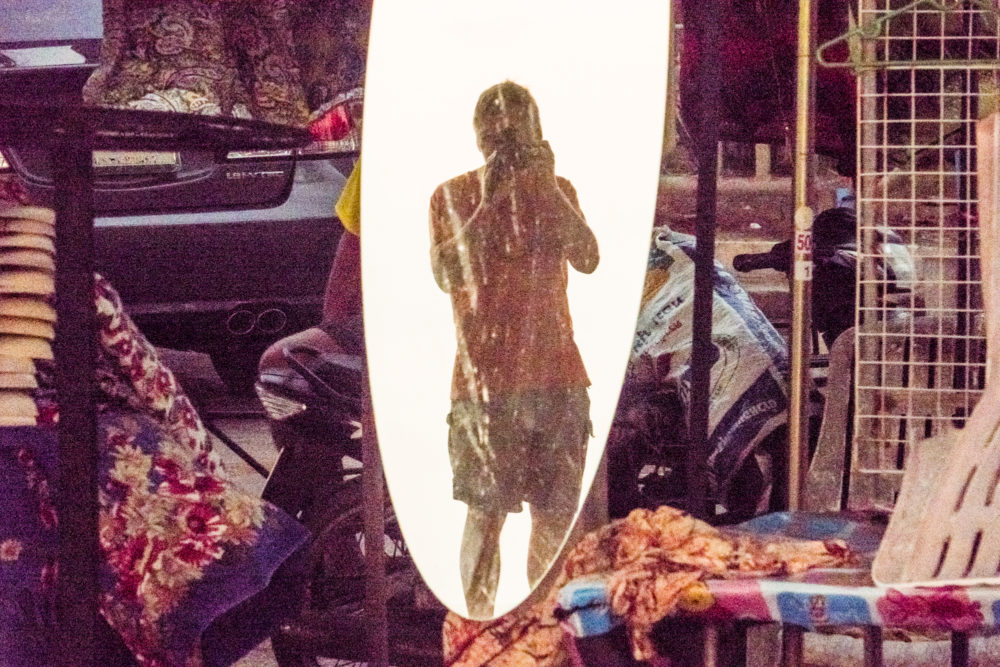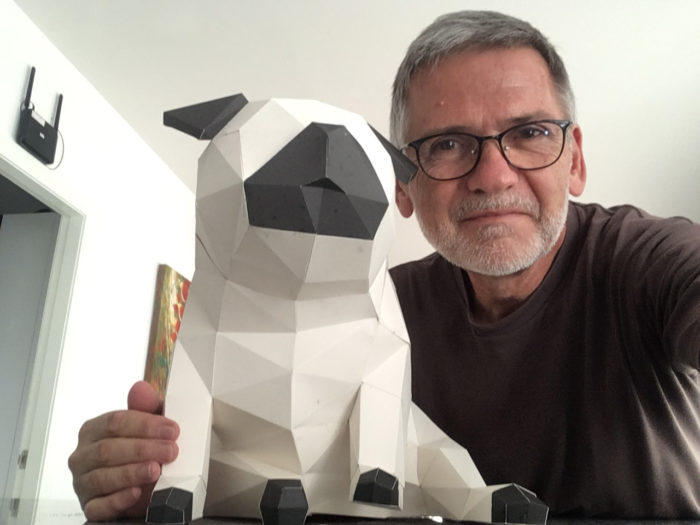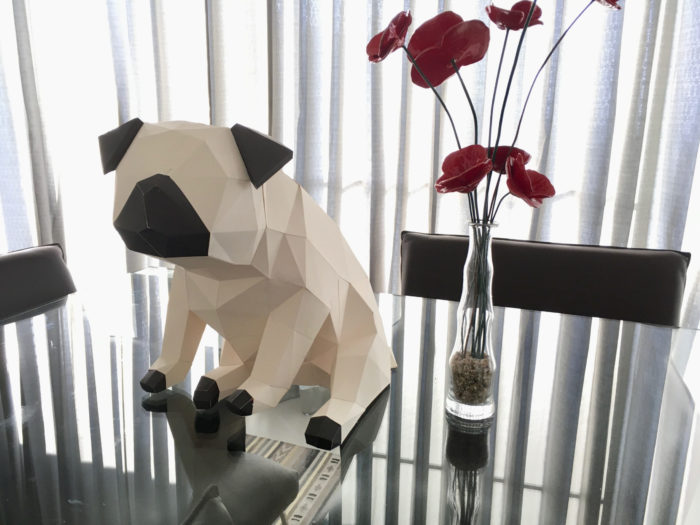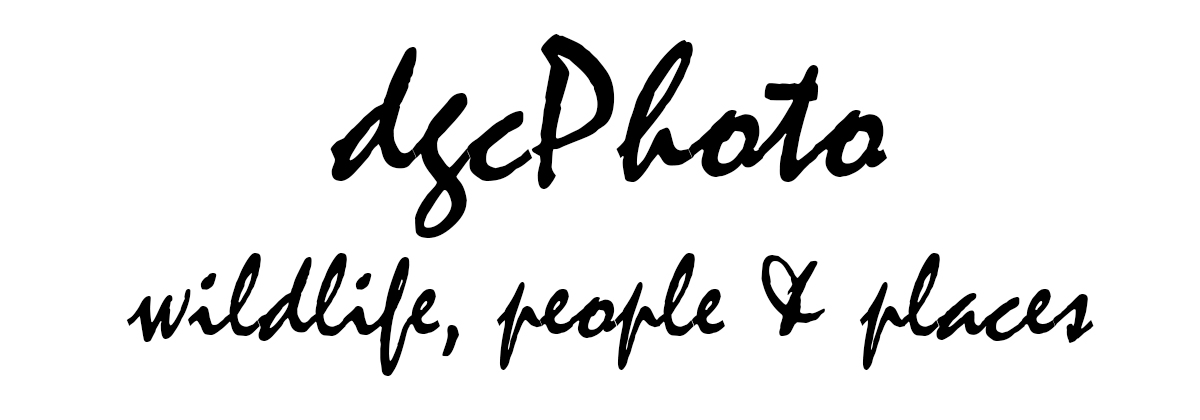
These days it’s hard to be a photographer without having a good working knowledge of computers. However, the appeal of the photographic cyberworld is not just fabulous photo-editing software, but being able to communicate through the internet with like-minded people worldwide. And all the time it gets easier, thanks to the thousands of dedicated code-writers out there. This site is the result of an excursion some years ago into WordPress, the learning curve for which was remarkably painless, although no themes are without their frustrations. For several years I used a theme called Photolux, which was good but like many things online, finally became too cumbersome. I have recently – Autumn 2019 – reconstructed all my sites using Elegant Themes and Divi Builder. Another learning curve, but not a bad one and the theme has the advantage of dozens of short videos to explain the minutiae.
Pinhole
For many photographers, the passion with the subject starts early in life. For me, it was on my tenth birthday when I was given a Kodak Twin 20: a pale blue pinhole camera with a built-in flash gun that used flash bulbs! The Kodak had its moments but fairly soon gave way to a second-hand Zeiss Icon Nettar bought in Dixons for four pounds. Secreted away somewhere is a stash of 6×6cm B&W negatives and colour transparencies from that fold-out-bellows wonder, together with large numbers of prints produced in a blacked-out kitchen using a home-made enlarger. How things have changed!
SLRs
My first SLR was a totally manual Practica, a very popular budget brand in the late 60s. It didn’t even have a lightmeter (I was given a Weston Master V for my 21st which I used for many years) so when I finally upgraded a few years later to the brilliant Olympus OM-2n, I thought I’d died and gone to heaven. The Olympus served well until it was stolen in Rome in 1994, by which time it called itself a ‘lympu’ – the case, if not the camera, had suffered the ravages of time.
Since then it’s been Canon all the way, firstly with a couple of film bodies and then the move to digital. A G1, to try out the new-fangled technology, was followed by a D60, and since then there’s been no looking back. Not only do I maintain that digital is now vastly superior to film, I also love the freedom and flexibility that computer processing gives, especially since I moved over to a Mac. Most of my processing is now carried out using Adobe Lightroom, with occasional further tweaking in Photoshop.
Equipment
For some time, I used Canon 1DMkII and 40D bodies; EF 28-70 f2.8L, EF 70-200 f4L IS, EF 300L f2.8 IS and EF-S 10-22 f3.5-4.5 lenses; a pair of 550EX flashes with a speedlite transmitter and a set of tubes and extenders, all of which were wonderful, but …
... Note added March 2016 … I’m not getting any younger and I’ve finally admitted defeat in the game of lugging kilos of equipment around, not to say the increasing feeling of self-consciousness in a world where everyone is snapping away with smartphones. So I’ve done two things. Firstly, started using my iPod touch for many snappy type photos – it has a really great camera with a brilliant pano function. And secondly, discovered and bought Canon’s compact G3X. I’d describe this camera as a smartphone on speed. It has excellent image quality, – a 20Mpixel sensor with superb low light sensitivity (ISO12800 that is very usable) and most important of all, a 24-600 equivalent optical zoom lens. It takes a bit of getting used to to allow for its eccentricities, but I’ve taken over one thousand shots now and I’m so pleased that the promise I made my wife Gail that I’d sell some of the heavy stuff will be honoured as soon as we return to Italy in the spring. Check out all my recent shots on the ‘posts’ page; they are taken using this magical piece of kit.
Note 2, added October 2016. The sale of the equipment was completed a couple of months ago and I now have, along with the GX3 – that never ceases to impress – a Canon 100D. This very lightweight piece of kit was bought so that I could retain the ability to shoot very wide angle using the excellent Canon EF-S 10-22mm f3.5-4.5 zoom lens. It’s a great camera with a body that weighs in at just 400g. So I’ve now achieved my goal of maintaining quality to the level I want while keeping everything in one smaller camera bag. Magic.
I’ve also recently changed my phone to the iPhone 5SE which has an even better camera than the iPod Touch, so that is the phone camera of choice for the time being.
Another note: January 2020. Some time in 2017, this site became moribund owing to distraction of other things, mainly novel writing. That’s still going ahead at full speed and I’m loving it. Check out the ‘My Novels’ link in the menu. I also moved a lot of photo posting to Instagram (davidgeorgeclarke).
However, with the new theme, I upgraded this site and I’m currently enthused to resume posting regularly. Let’s see how it goes.
On the equipment side, I ultimately found the GX3 rather limited owing to its slow shutter response, plus the sensor developed an irritating spot that showed on too many shots. I have relied far more recently on the 100D, using three lenses: the EF-S 55-250mm f4-5.6 IS STM (super lightweight and good quality), my old faithful wide-angle zoom, the 10-22mm, which never fails to delight, and a Canon EF-S 60mm f2.8 macro, which is also a brilliant lens.
The main constraint with the 100D is the limited frames per second and the focussing accuracy when firing on continuous. I’ve now invested in the new Canon 90D which seems to tick many boxes. It’s arriving soon, so watch this space …
OK, you watched and here’s the latest while still in Phuket owing to the constraints of COVID-19. The 90D is superb! A lightweight marvel capable of 10fps, great movies, and my latest discovery: back-button focussing. If you have never tried it, do so. You won’t look back.
,
And what about all those resolutions and complaints about getting old? Nah, old age is a state of mind. Having become frustrated by not being able to get close enough to the many small birds around here, and having stretched the 55-250 zoom beyond its limits as well as the 90D’s sensor, there was only one way to go: the Sigma 150-600 f5-6.3 DG OS HSM C, which on a 90D with its 1:1.6 cropping ratio becomes a 240-960mm! It’s like a telescope. Check out the results in the latest posts. I couldn’t be more pleased with it.
Photos
The main emphasis of my work is definitely on nature and wildlife, but I also enjoy pointing the camera at just about anything. My wife, Gail, and I are fortunate to have children who are scattered with their families around the globe, giving us a great excuse to travel quite widely. We now divide our time between the UK (Lincolnshire), Italy (Tuscany), and Thailand (Phuket) with occasional excursions to Hong Kong, Kenya and New York, all of which, in their very different ways, provide endless photographic opportunities.
I very much enjoy surfing around other photographers’ sites and being able to enjoy their work wherever I happen to be. I hope this site will also bring a few people some pleasure. Thanks for visiting and please come back soon; there’ll be new photos added regularly.
David Clarke


